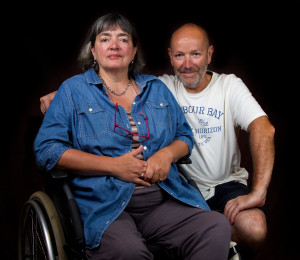Evidence-based, if incomplete, new guideline is a major step forward.
 All too often, FSHD patients encounter doctors whose knowledge of the disease seems to be gleaned from dusty textbooks. A patient disabled by pain might be told that “pain is not associated with FSHD.” Or a physician may not think to order lung function tests, even though a patient feels too exhausted every morning to get out of bed.
All too often, FSHD patients encounter doctors whose knowledge of the disease seems to be gleaned from dusty textbooks. A patient disabled by pain might be told that “pain is not associated with FSHD.” Or a physician may not think to order lung function tests, even though a patient feels too exhausted every morning to get out of bed.
One can hardly blame the doctors. Most have rarely, if ever, seen an FSHD patient, and between 15-minute consultations, they barely have time to breathe, much less study up on the latest research.
That’s why the publication today of a new care guideline for FSHD by the American Academy of Neurology (AAN) is a big deal. The guideline condenses the results of nearly 60 peer-reviewed studies into a set of recommendations that any doctor can easily follow. The guideline covers evaluating, diagnosing, and managing the care of FSHD patients, and is “evidence based,” meaning it takes into account the design and statistical power of each study to evaluate how strong or weak a recommendation should be.
The guideline does have some gaps. It does not mention some widely used interventions, such as orthotics and aquatic therapy, even though many doctors prescribe them and patients find them beneficial. This is not because these interventions are useless, but simply because their benefits have not yet been studied in a controlled trial.
The FSH Society will be distributing copies of the AAN’s summaries created for patients and families, as well as for clinicians. The Society also plans to produce web conferences and other forums for educating patients and physicians about the guideline.
The new AAN FSHD guideline is a result of the FSH Society’s advocacy efforts in Washington, DC, over the past 20 years and the Society’s role in the writing and passage of the Muscular Dystrophy Community Assistance Research and Education Act (MD CARE Act 2001, 2008, and 2014). That law mandated the U.S. Centers for Disease Control to increase its efforts on adult muscular dystrophy and now, specifically, FSHD.
“Before this publication, there were no evidence-based care guidelines for FSHD,” said Julie Bolen, PhD, MPH, epidemiologist, National Center on Birth Defects and Developmental Disabilities, Centers for Disease Control and Prevention (CDC). “We expect that this guideline will fill that evidence gap for both the people who live with these rare disorders and the healthcare professionals who treat them.”
“We are pleased to have been a part of the process of developing an evidence-based care guideline for patients with FSHD and their families,” remarked Daniel Perez, President & CEO of the FSH Society. The guideline “represents a solid foundation and competent standard on which to begin to standardize and improve on care given to FSHD patients.
“The Society was especially pleased to see the thoughtfulness and care given to creating a clear picture and highlighting key issues in FSHD care, though sometimes a paucity of publications was present,” Perez noted. “We thank the CDC, the AAN, and the AAN Board of Directors, authors of the guideline published in Neurology and the review and dissemination panels for their efforts to include the patient at all levels of the process, and in improving lives for all affected with and by FSHD.”
Funding for this publication was made possible (in part) by grant DD10-1012 from the Centers for Disease Control and Prevention. The findings and conclusions in this report are those of the authors and do not necessarily represent the official position of the Centers for Disease Control and Prevention. The remaining funding was provided by the American Academy of Neurology.
Reference
“Evidence-based Guideline: Evaluation, Diagnosis, and Management of Facioscapulohumeral Muscular Dystrophy,” a report of the Guideline Development, Dissemination, and Implementation Subcommittee of the American Academy of Neurology and the Practice Issues Review Panel of the American Association of Neuromuscular & Electrodiagnostic Medicine.
Download and share with your doctor:
Summary for patients
Summary for clinicians
Full text of article


How can I get a copy of this for myself and one for my neurologist?
Thank you for all you do on behalf of FHSD patients everywhere.
We included a link to download the full article. We are in the process of getting a link for the shorter summary which might be easier for both patients and doctors to use. Thanks for the kind compliments!
Here’s the link to download the article: http://www.neurology.org/content/85/4/357.full.pdf+html
Thanks for all your hard work and follow thru.
This is so exciting!!!! I look forward to the day when the same is done not just for adults but also children with IFSHD!
This is great information to share with famiy doctor, non-specialized neurologist, etc.l